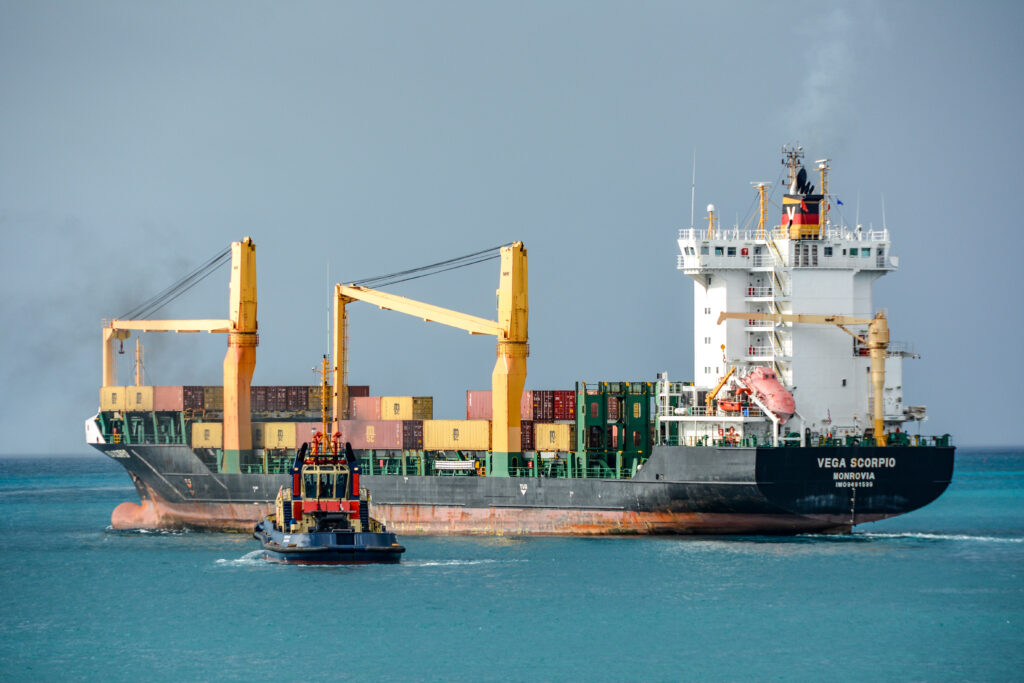The sound of waves gently crashing is one of the most relaxing noises. But beneath the surface, things are far less peaceful.
The underwater world is becoming increasingly noisy thanks to human activity – and it poses a major threat to marine life.
A CHAOTIC CRESCENDO
Over the past few decades, the ocean has steadily become louder due to human activity.
From the relentless hum of shipping vessels to underwater construction, the ocean is now a noisy place. There are over 50,000 container ships navigating the ocean at any given moment – that’s a lot of engine noise!
Shipping is not the only culprit. Recreational and tourism boating, military sonar, oil and gas exploration and even wind farms all contribute to the noise. Sonar systems, which use sound waves to navigate and map the ocean, are particularly loud and disruptive to marine life.
Airguns are one of the loudest offenders. Deployed to search the ocean floor for oil and gas, these guns can be heard up to 4000 kilometres away and have been linked to multiple mass strandings of marine animals.
Sound travels five times faster in water than it does in air, making every human-made underwater noise particularly disruptive for ocean dwellers.
CAN YOU KEEP IT DOWN?
For marine mammals like whales, dolphins, sea lions and seals, sound isn’t just noise – it’s their primary mode of communication. The more noise there is in the ocean, the more complicated it is for marine mammals to communicate, avoid predators, locate mates and prey, navigate and rest.
Dr Kate Sprogis is a marine mammal biologist at the University of Western Australia who researches the effects of underwater noise pollution on humpback whales in the Exmouth Gulf and on short-finned pilot whales off the Canary Islands.
“If a whale wants to talk to another whale and a ship is passing by, they may not be able to hear each other,” says Kate.
“Ship noise is low frequency and baleen whale song is low frequency, so the ship noise can mask the whales communicating.”
Whales also need their rest, particularly when they are nursing their young. In places like the Exmouth Gulf where female whales are essentially on a milk-and-nap routine, the disturbance of vessels can wake them up and burn through precious conserved energy.
“The mother needs to conserve energy because she doesn’t feed until she’s back in Antarctica, and she is providing milk to her young,” says Kate.
TRAGIC CONSEQUENCES
Noise pollution is also a leading factor in whale strandings.
Areas with heavy sonar use often experience increased strandings. This correlation is so strong with some species that scientists regard it as a cause-and-effect relationship.
Even vessels that are used to target whales and dolphins, such as whale-watching boats, can become major disrupters, pushing marine mammals from their home territory. For example, in New Zealand’s Milford Sound, constant disturbances from tourism vessels have caused a decline in the resident bottlenose dolphin population.
“With constant vessel disturbances, their numbers have dropped,” says Kate.
DIALLING IT DOWN
The good news is that, unlike other forms of pollution, underwater noise pollution can be addressed.
The advancement of quieter shipping technologies and swapping fuel engines for electric ones are critical for quieter seas.
Introducing noise thresholds for vessels that target whales and dolphins and setting speed limits in sensitive areas could also reduce noise pollution and give marine mammals a break from human-made noise.
Less-disruptive options for seismic surveying for oil and gas are in progress, with the development of lower-amplitude technologies. And the loud noises of pile driving for offshore wind farms are being curbed by the development of acoustic bubble curtains.
Sound is essential for the survival of our oceans, so we need to take steps to dial down our destructive noise pollution to turn up the volume on the ocean’s natural sonic symphony.











